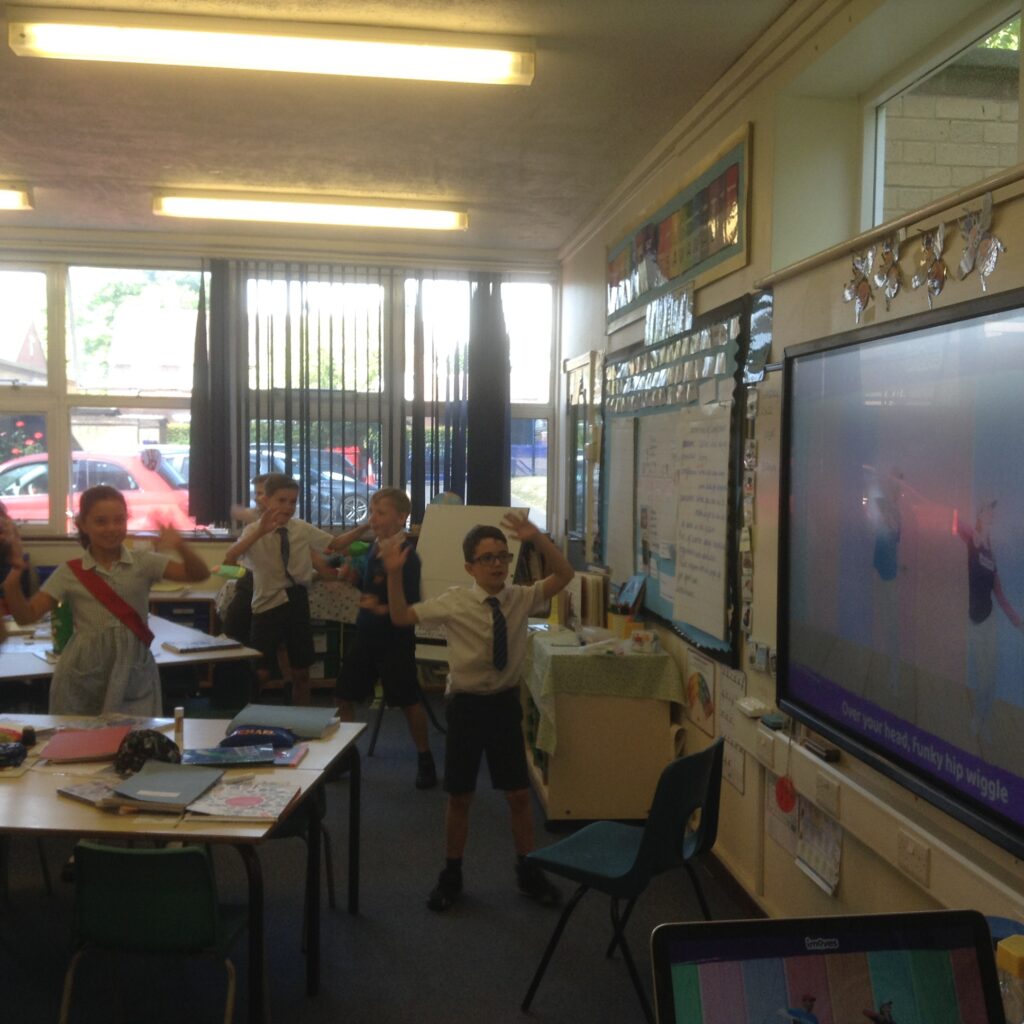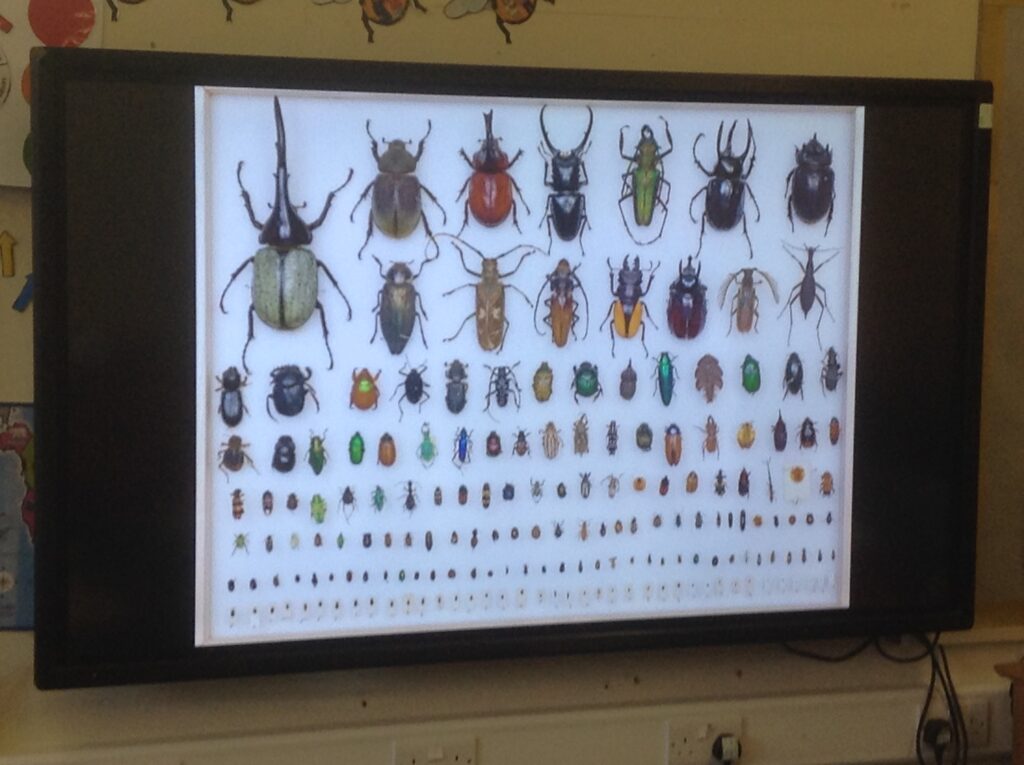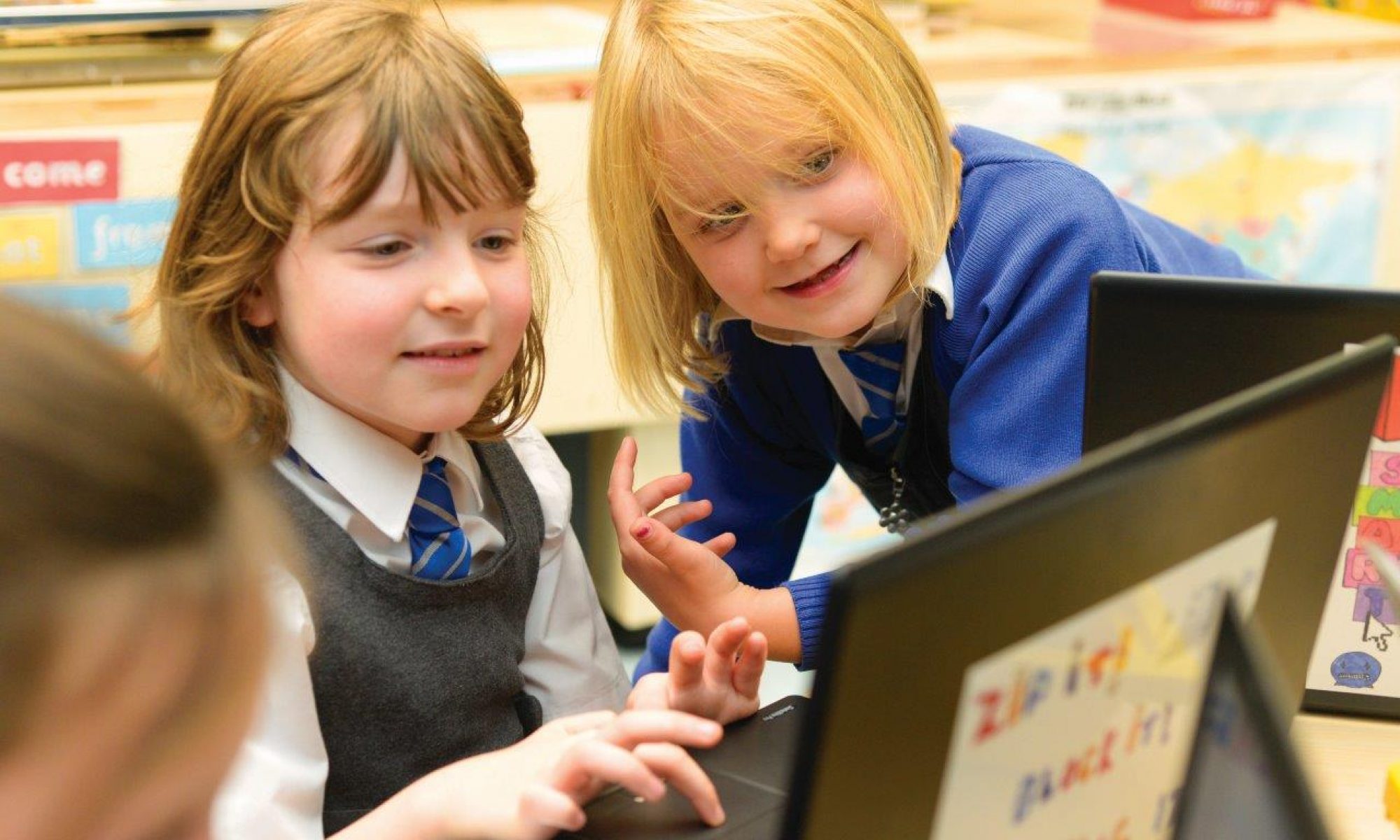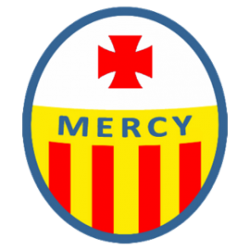… has been full of variety and creativity.
On Monday the children sculpted Tutankhamun’s death mask from clay



On Thursday the children painted the tiles, using brilliant blues and golds like in Ancient Egypt.




The finished results look stunning; and are mounted, ready for you all to view on Open Evening.
Learning can be a sedentary affair, increasingly so the older children get. You need to be still when concentrating hard on equivalent fractions, for example. It’s also important, and fun, to break this up with movement. The class likes to dance to i-moves tracks in-between other sessions. This week we’ve all enjoyed dancing to “Count on Me” and “Celebrate”

On Thursday and Friday, year 3, like the whole school, was treated to fantastic interactive learning to help understand Judaism. After a couple of years’ absence, Ruth returned and helped year 3 understand all about the synagogue – what it looks like, contains, what Jewish people do there. The children were able to wear Jewish clothes, explore Torahs (artefacts), learn about Hebrew letters and even eat and drink some traditional Jewish cookies and grape juice. The children created their stained-glass windows, remembering that they must not contain images of God or people. Today, Vincent and Pauric shared what they had learnt with the whole school, presenting their knowledge in confident, expert ways. Year 3 listened beautifully to the contributions by other classes today, too.









Pollination was an important theme this week. In Science we learnt what flowers are for. And on Friday Dr Lyal came in to talk about minibeasts, which is what he spent his career studying. To be specific, he spent his career at The Natural History Museum collecting, categorising and naming weevil beetles.




These are some of the pieces of equipment Dr Lyal uses to collect insects, which has taken him to all sort of exciting places like the jungle in Belize, Indonesia and…. Hertforshire…
Yesterday, he went on safari in his own back garden and collected some minibeasts to show us and talk about. Amongst the huge amount of knowledge shared, the children learnt about the number of legs minibeasts have, the names for different types of minibeasts, why minibeasts are certain colours; and much more.





We talked about the fascination and wonder of nature. There is always something new to learn, question, discover and rediscover. Professions working with animals, plants and other aspects of nature are open to anyone who is interested and commits to understanding the world around us, both by working hard at Science and also in taking any opportunity to explore and understand at home – for instance by doing a bug hunt at home. A magnifying glass or plastic tub with magnifier at one end is a cheap way to explore local minibeasts more easily.
The children have drawn and written a card to say thank you to Dr Lyal which I will post.
The homework is on Google Classroom. Please also remember the RE homework on the Quicklinks.
I hope to see you at the school fair tomorrow. Have a lovely weekend.

